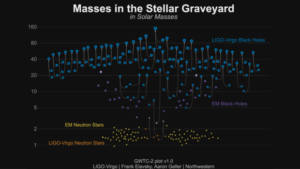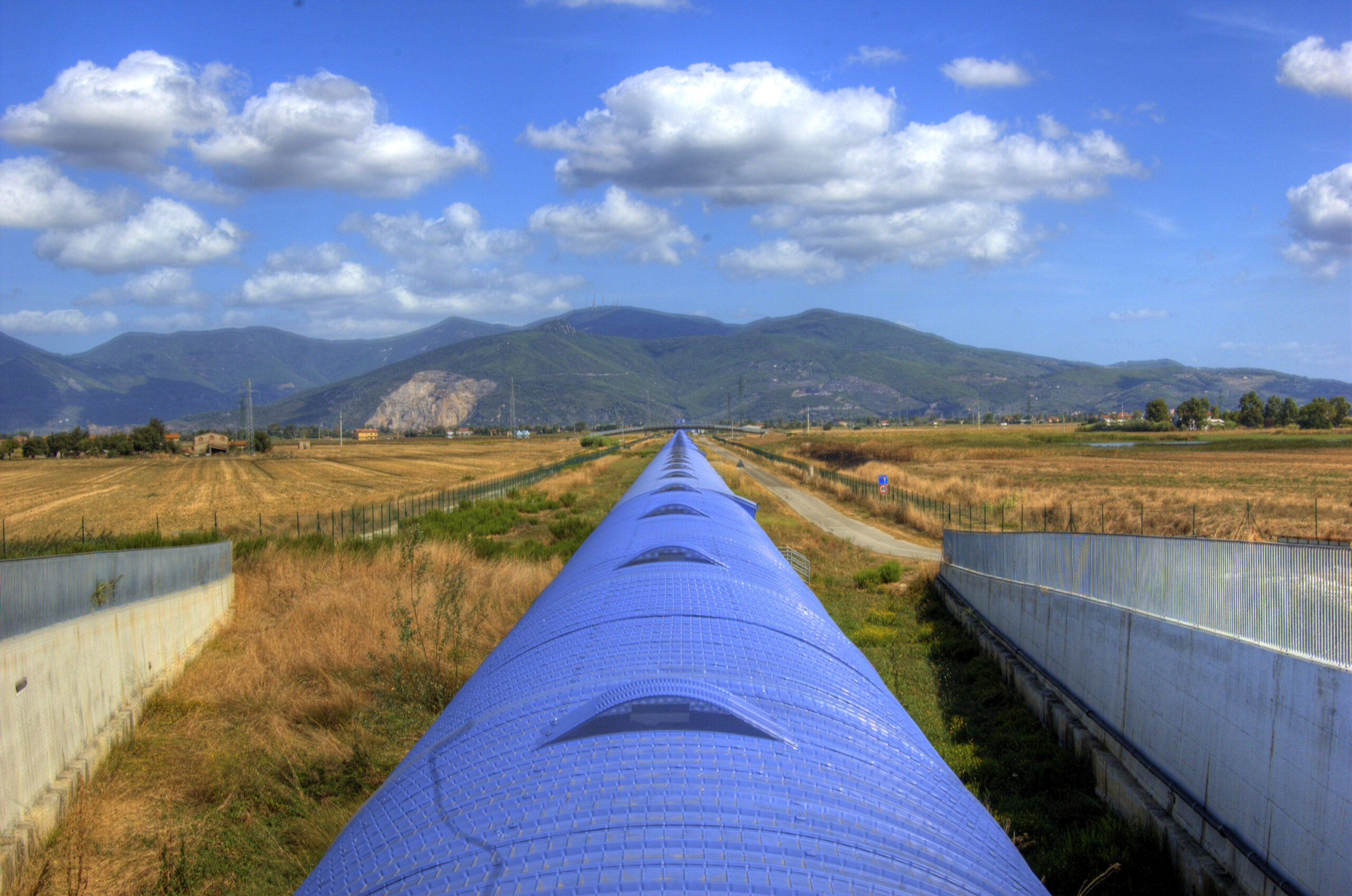The international collaboration of gravitational wave detectors LIGO and Virgo in the US and Europe have published a new catalog of their observations. After a year of complex analyses, another 39 collisions of mainly black holes and a few neutron stars have now been confirmed.
Including the results of the measurement period from April to October 2019, the catalog now contains more than fifty observations of gravitational waves with the detectors. This gives astrophysicists to statistically look into black hole populations, and evaluate their theories on stars and gravity.
The first gravitational wave detection ever dates back to 2015 when space-time vibrations from two merging black holes were measured for the first time ever. The extremely subtle waves were predicted a hundred years earlier in Einstein’s General Theory of Relativity. For a long time they seemed too subtle to measure.

The observations were made with three so-called interferometers, which can measure subtle distortions of space and time with lasers. In the US there are two detectors with two arms of four kilometers each at right angles to each other, near Pisa in Italy there is the Virgo detector with two arms of three kilometers each at right angles to each other. Nikhef is closely involved in the construction of and measurements with the Virgo detector.
Two thirds of the new observations were previously reported, but they have now been analyzed in detail, so that all masses, rotation and distance are fixed. It concerns 36 fuses of black holes, a collision of two neutron stars and two collisions of a black hole with a neutron star.
The four most remarkable results have already been published separately in the past year. In the new overview 13 new observations have been included that were not previously reported seemed less marked.
One of the most important insights concerns the so-called mass gap: an area of mass between black holes and neutron stars, where in theory no objects could exist. The measurements show that such objects do exist, and therefore the theory needs to be improved. On the other hand, collisions of medium black holes have also been found (between 65 and 120 solar masses) for which the theory of star evolution has no explanation.
The detectors of LIGO and Virgo were shut down prematurely this spring in their third round of measurements because of the corona crisis. Currently, improvements are being made to the detectors, including equipment developed and built by Nikhef. A next measurement cycle with the even more sensitive detectors is planned for 2022.

